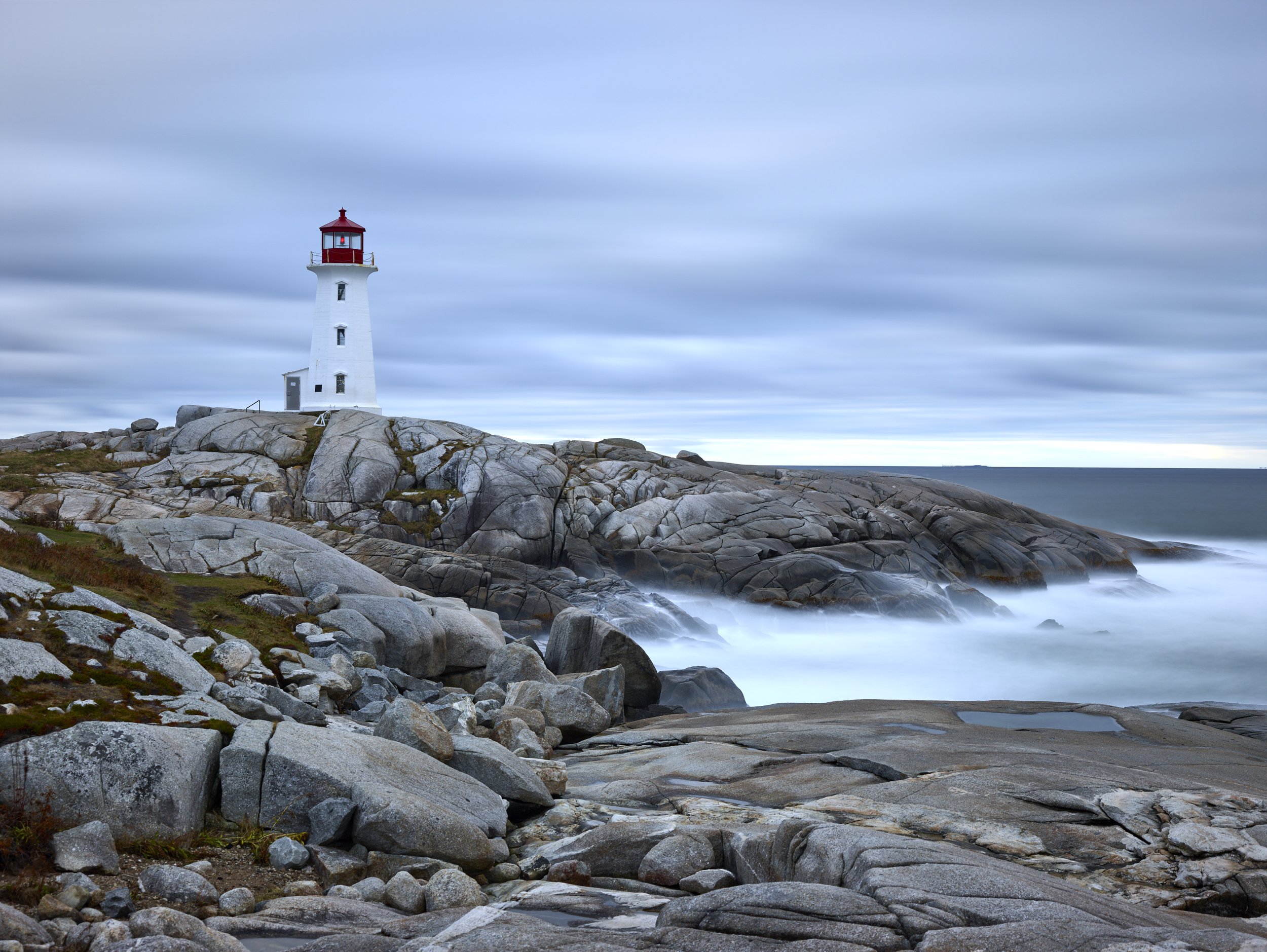The Making Of ... Peggy's Cove
In the autumn of 2019, David Brookover and I chased fall colors from Nova Scotia down along the coast of Maine. Being born and raised along the coast in Southern California, which is the south western corner of the United States, I was excited to explore Maine, which is the north eastern corner of the United States. Traveling to Nova Scotia was something I had dreamed about for a long time. In 2010 Apple introduced the photo editing program called Aperture 3. Part of their marketing campaign was a video called Connecting Pictures With Places featuring National Geographic photographer Jim Richardson.
The video follows Richardson’s adventures in and around Peggy’s Cove and Lunenburg, Nova Scotia. The concept Apple were pitching was the ability to organize your photo catalog by GPS location, and the ability to tie locations from the GPS data on your iPhone to the images created from your DSLR.
Jim’s toothy, avuncular narrative had me absolutely spellbound. I managed to make it to Lunenburg, but never got to see the Dory Shop. But one location from the video that I did manage to visit was Peggy’s Cove. Peggy’s Cove is a tiny fishing harbor featuring an iconic lighthouse.
If you’ve read any of our previous blog posts, you’ll know that we’re big advocates of scouting a location thoroughly and returning when the light and weather is ideal. On our first visit, David and I spent a couple of hours enjoying the area, walking on the rocks around the lighthouse, making preview images on the iPhone, and having a great lobster lunch along with the busloads of tourists. In addition to the lighthouse, Peggy’s Cove Harbor is also super cool and worth photographing.
On the morning of our shoot, David and I arrived well before sunrise. It was pitch black, without even a hint of blue hour in the sky. The temperature was near to (or below) freezing, and the wind was blowing without enough force to rock the pickup truck from side to side. David, being the smart one, decided to just wait in the truck and stay warm for 45 minutes and would meet me out on the rocks when there was some light in the sky.
I wasn’t completely happy with the compositions I had created in my preview images from the previous day, so I decided to bundle up and venture out into the freezing cold to see if I could find a new composition. Rather than continuing to explore the rocks to the east of the lighthouse, I decided to see if I could find a better composition from the north. Afterall, if I didn’t find anything from the north, I could quickly zip back to the locations we scouted the previous day.
Bingo!
I managed to find a spot on a small, slippery, rocky ledge over a deadly 30 foot drop, and the composition from that spot was just fantastic. You can see Brookover standing on the edge of the cliff in the images above. I set up my tripod and began creating test exposures. My camera, the Phase One IQ180, has a CCD sensor so you have to shoot at base ISO (35) and has a maximum exposure duration of two minutes. I didn’t want to waste two+ minutes per cycle as I was making compositional adjustments, so I made my first exposure at f/5.4 and 1m 16s. Here’s that first image straight out of camera.
Here’s the first image straight out of camera.
I made one more exposure, this time at f/8 and 60 seconds. At this point I knew I had a winner, so I made one more exposure of 60 seconds at f/11. In fact, I was so happy with the image on the rear screen of that camera I decided to make only 4 exposures in total, then I set off to photograph the harbor and the rocks that we had scouted the previous day, before returning to my winning location with Brookover.
I made 13 more exposures, this time using a Blackstone ND filter to give me a long exposure effect as the light in the sky had increased considerably since my first exposures early in the morning. This exposure was using the Blackstone ND 10 Stop to give me 60 second exposure.
Peggy’s Cove later in the morning photographed with Blackstone ND 10 Stop
Both the following image (no filter) and the preceding image (10 Stop Blackstone ND) had the same resolution and similar raw image quality, meaning that the Blackstone ND didn’t cause any image degradation or color shift. Ultimately, the 3rd exposure I made that day became my “select” because I preferred the light on the lighthouse.
Peggy’s Cove, no filter, first morning light when the exposure was made.
Notes from the image
First off, this composition is far from original. Many people have stood right there and made a similar shot. Using a quality camera, aligning the horizon carefully, paying careful attention to the whole image (especially the corners), and taking great care to stabilize the camera in the wind helped considerably. The single greatest factor in getting a successful image was to arrive long before the tour buses in the dead of night and get the lighthouse at first light.
There is minimal processing on this image. No layers, masks, cropping or dodging/burning of any kind. The only adjustments are exposure, contrast, brightness, saturation, color temp, levels, clarity and structure.
For the composition, I threw the rule of thirds out the window and placed the horizon right in the middle of the image, then placed the lighthouse in the left side of the image to create a simultaneous balance/imbalance in the image, what the Japanese might call a wabi-sabi aesthetic. I’m really pleased with the final result.
Thanks for reading our blog. We hope you’re inspired to get out and make great images.











